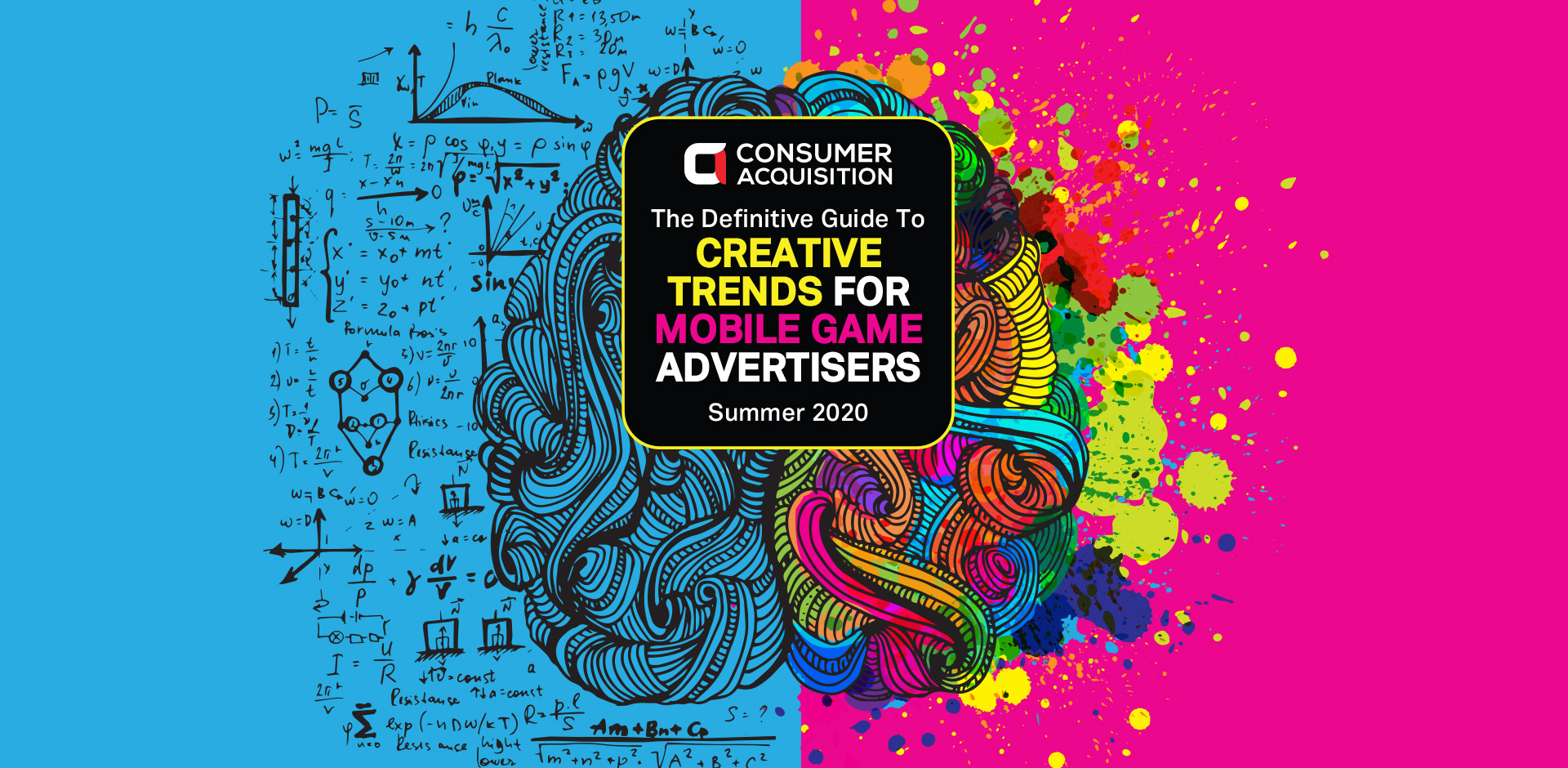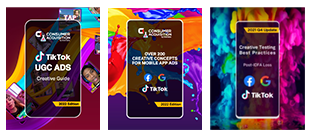Section Two
Using Player Profiles for Market Segmentation and Creative Targeting
Using player profiles is important for market segmentation and creative targeting. Develop your creative, based on your learnings of trends. But you will need to first understand your audience and who it is you are targeting.
Why do people play mobile games? What motivates them to choose one app over another, or to click on one ad over another? What motivates them to continue playing a game rather than just playing it once?
The answer lies in a concept called “horizontal segmentation.” It is an idea that remade the food industry a few decades ago and has remade several other industries since then. We believe it is about to remake user acquisition and Facebook ads, too.
Pasta sauce, pickles, and Howard Moskowitz
The first champion of horizontal segmentation in consumer marketing was a guy named Howard Moskowitz. Moskowitz, a food researcher and psychophysicist, had been asked to find the perfect sweetness level for a new type of Pepsi. But after he dug into the problem, Moskowitz discovered there was no perfect level of sweetness for the new type of Pepsi. There were only perfect levels of sweetness.
Or, as Malcolm Gladwell explains in his TEDTalk on the subject, there was no perfect Pepsi – there were only perfect Pepsis.
Pepsi, unfortunately, wasn’t sold on this concept. Moskowitz had to keep pitching it far and wide, with tepid reception, until a pickle company gave his idea a spin. And Howard, true to form, found them not the perfect pickle, but their perfect pickles – zesty, classic, etc.
That was a good start, but the revolution of horizontal segmentation did not take off until Prego, a pasta sauce company, hired Moskowitz. Moskowitz, once again, went out and did a ton of research about how people felt about pasta sauce. He returned with not the perfect pasta sauce, but with the perfect pasta sauces.
Most famously, Howard returned with a recommendation to make chunky pasta sauce. No other company had been selling chunky sauce, and pasta sauce makers were not aware that people even wanted chunky sauce. But because Prego trusted Howard and the research that pointed to this unmet need, Prego launched a line of chunky pasta sauce. And went on to sell $600 million of it over the next few years.
Using Player Profiles in Horizontal Segmentation for Facebook User Acquisition
So, what does all this sauce talk have to do with user acquisition? Everything, actually. Because in essence, Moscowitz had unearthed the following ideas:
1. People are not all the same.
2. While people are not all the same, if you study them in large groups you will find they tend to cluster around a certain set of profiles or preferences. Personas, if you will.
3. With enough data and data analysis, these preference clusters can be found.
4. If you develop products expressly tailored for each of these preference clusters, you can sell more stuff. A lot more stuff.
Gladwell explains in his TEDTalk that, for example, if his audience was to get together and make one perfect brew of coffee together, they would individually give that brew a collective average score of about 60 on a scale of zero to 100.
But if the group was allowed to break up into coffee clusters based on certain dominant preferences and was able to make coffee expressly designed for each of those preferences, the satisfaction score for those preference-driven brews would rise to about 75 to 78.
As Gladwell explains, “The difference between coffee at 60 and coffee at 78 is the difference between coffee that makes you wince and coffee that makes you deliriously happy.” (Gladwell 17:16).
So, to paraphrase what Moskowitz and Gladwell have explained and to bring it into the context of Facebook and Google user acquisition:
- There is no perfect game. There is no perfect way to advertise or marketing for that game, either.
- But there are perfect games. There are perfect ads.
- Finding the persona clusters or player profiles in gaming for these games and ads (and more specifically, finding the motivations of these persona clusters) will let us create ads that make people dramatically happier and take the action we want them to take (click, download, purchase, or view ads).
An Evolution in UA
This is clearly an evolution – if not a revolution – in how most UA and design teams have been doing creative for user acquisition.
Most UA and design teams have been approaching their advertising and creative strategy with the assumption that there was a perfect game, a perfect app, a perfect ad. “A platonic ideal,” as scholars say.
What if that is not so? What if there are only perfect apps, perfect games, perfect ads?
Can we talk to people based on what motivates them to play the game?
What if we could take a video ad – the exact same video – and then adjust the copy or the call to action based on what motivates different users to want to play? By tailoring messages according to what those player profiles will most respond to, could we increase ROAS by… 20%? 30%? Or could we expand the game into a whole new audience segment?
Game Theory and User Behavior Models
If you know your way around game theory, you will know we already have quite a few detailed studies about different gaming profiles and user personas.
So, we have quite a lot of information about what motivates people to play games.
You can look to “Fogg’s Behavior Model,” or Scott Rigby’s Player Experience of Need Satisfaction (PENS) model. Or you can view your users through something simpler, like “The Big Five,” or the “Five-Factor Model.” Paula Neves breaks that model out well in her article Looking at Player Motivation Models,
- Openness to Experience: If one is inventive and curious or consistent and cautious.
- Conscientiousness: If one is efficient and organized or easy-going and careless.
- Extraversion: If one is outgoing and energetic or timid and reserved.
- Agreeableness: If one is friendly and compassionate or challenging and detached.
- Neuroticism: If one is sensitive and nervous or secure and confident.
The five traits, under the acronym OCEAN, are therefore treated on a spectrum where you can be open or closed to experience, conscientious or unconscientious, and so on.
Bartle’s Player Types may be the model that the gaming industry embraces the most.
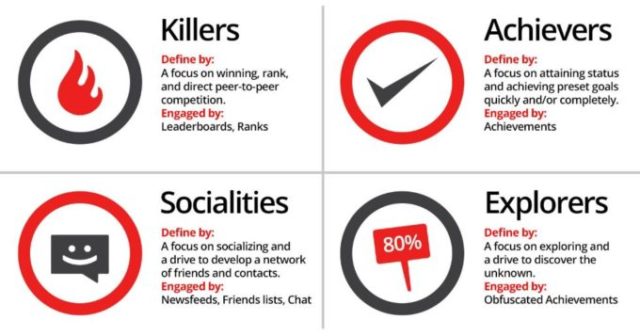
In fact, given the names of the player types and their descriptions in Bartle’s model, it almost seems like some of these player types have already filtered down into ad creative.

Or maybe behavior models aren’t quite your thing. Maybe you want to view things through the lens of which types of emotional hooks appeal to different player types.
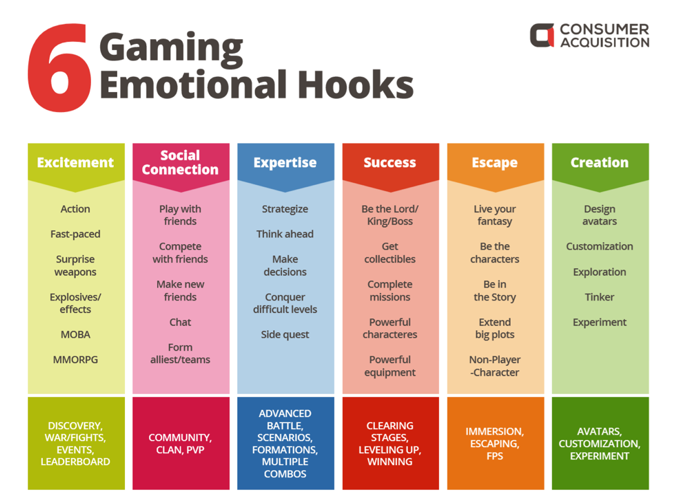
As a UA manager or designer (or even a game designer, but that is another article), you can start seeing your user base through any of these different models. And you can start customizing your creative and your advertising tactics accordingly.
Examples of Using Player Profiles
Cutting-edge UA and design teams are already exploring these different models and applying them to their user base. When we polled our clients, we learned that about 10% of them have these sort of persona profiles in place. Typically, these models are being generated in marketing departments using user surveys.
So, here is what an actual player profile might look like. This is sample data, but it gives you an idea of what information gets included and how detailed these profiles tend to be.
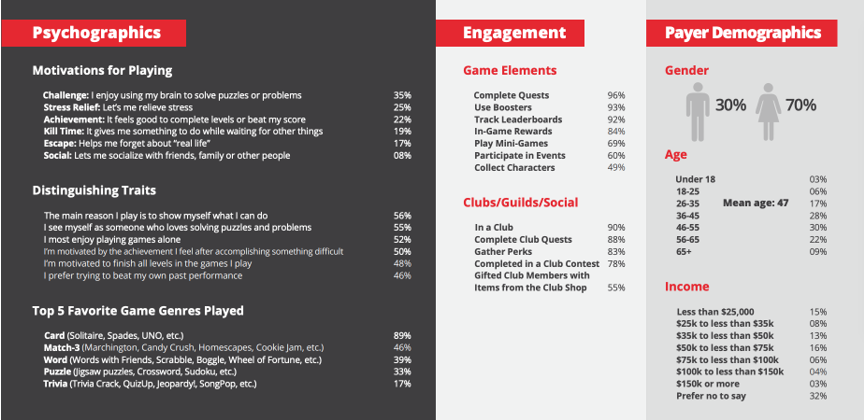
Note how the graphic shows what this particular player profiles most cares about in the game. The Demographic info is included, but what will really shape our creative is in the left column. Demographics might help a little, but user motivations are the driver.
So, we can take the motivations from these different player clusters and look at what’s unique about them. We can also see which other titles they are playing. This helps us come up with new creative ideas and a new list of competitors, which in turn lets us do better competitive analyses.
Armed with this information, almost any designer would immediately understand that they need to create different ads for these different player segments. These are different audiences. Even if the ads are ultimately meant to sell the same game to all the different profiles, ads tailored to each profile are going to perform dramatically better than one ad designed to try to please them all.
Even being able to swap out different bullet points for each player persona could result in tremendous improvements to ROAS.
People Cannot Always Tell You What They Really Want
Before you try to apply all this by launching a user survey or research study, know this: People may not be able to tell you what they really want. Because they don’t know.
Sometimes, you do not know what you really want until you happen to stumble upon it.
For example, Moskowitz, the pasta sauce researcher, discovered that many people wanted chunky pasta sauce, not the perfectly smooth pasta sauce that was only available at the time. Only with some unusually clever research was Moskowitz able to unearth this desire.
Gladwell describes this elegantly by talking about coffee. As he explains, if you ask the typical American what type of coffee they like, they will say “I want a dark, rich, hearty roast.” (10:40). But most of us don’t really want a dark, rich, hearty roast. Only about 25-27% of us actually like a dark, rich, hearty roast. Most of us like milky, weak coffee. But we will never, ever say that.
All this, of course, turns standard product research on its head. It means all those surveys and focus groups and other tactics we have been using to figure out what people want from our games are not the full stories.
But this is exactly the principle that put Apple on the map. Steve Jobs didn’t go find out what people wanted from a better cassette player. He built them something beyond their imagination: The iPod.
Henry Ford is often quoted with a similar sentiment: “If I had asked them what they wanted; they would have said faster horses.”
So what we may be aiming for here is a quantum leap, not an iteration. Whoever can figure it out, systematize it, and apply it to game design and creative strategy could well become a billionaire. Or another Howard Moskowitz.
Using Player Profiles as “UA Creative Strategy 2.0”
For the past two years, we have watched Facebook and Google move towards fully automating UA advertising. And because the algorithms of those two ad platforms have been getting better and easier to use all the time, much of the qualitative side of UA management is now best done by machines.
Creative, however, is still best managed by humans. This includes all aspects of creative – creative development, creative strategy, and creative testing. Creative is our best competitive advantage. Especially, now that the ad platforms have removed the competitive advantage third-party adtech used to deliver.
But now, with player profile theory, there is a whole new dimension to creative. It takes everything to another level.
Once we can see what’s motivating people to play games, we have discovered a whole new level of creative theory. It makes getting overly focused on button colors look downright shallow.
All the creative elements we have been focused on up until now need to be realigned to serve these customer motivations. For example, colors, sounds, even ad copy.
With player profiles theory and player motivations, we have crossed into Creative Strategy 2.0.


